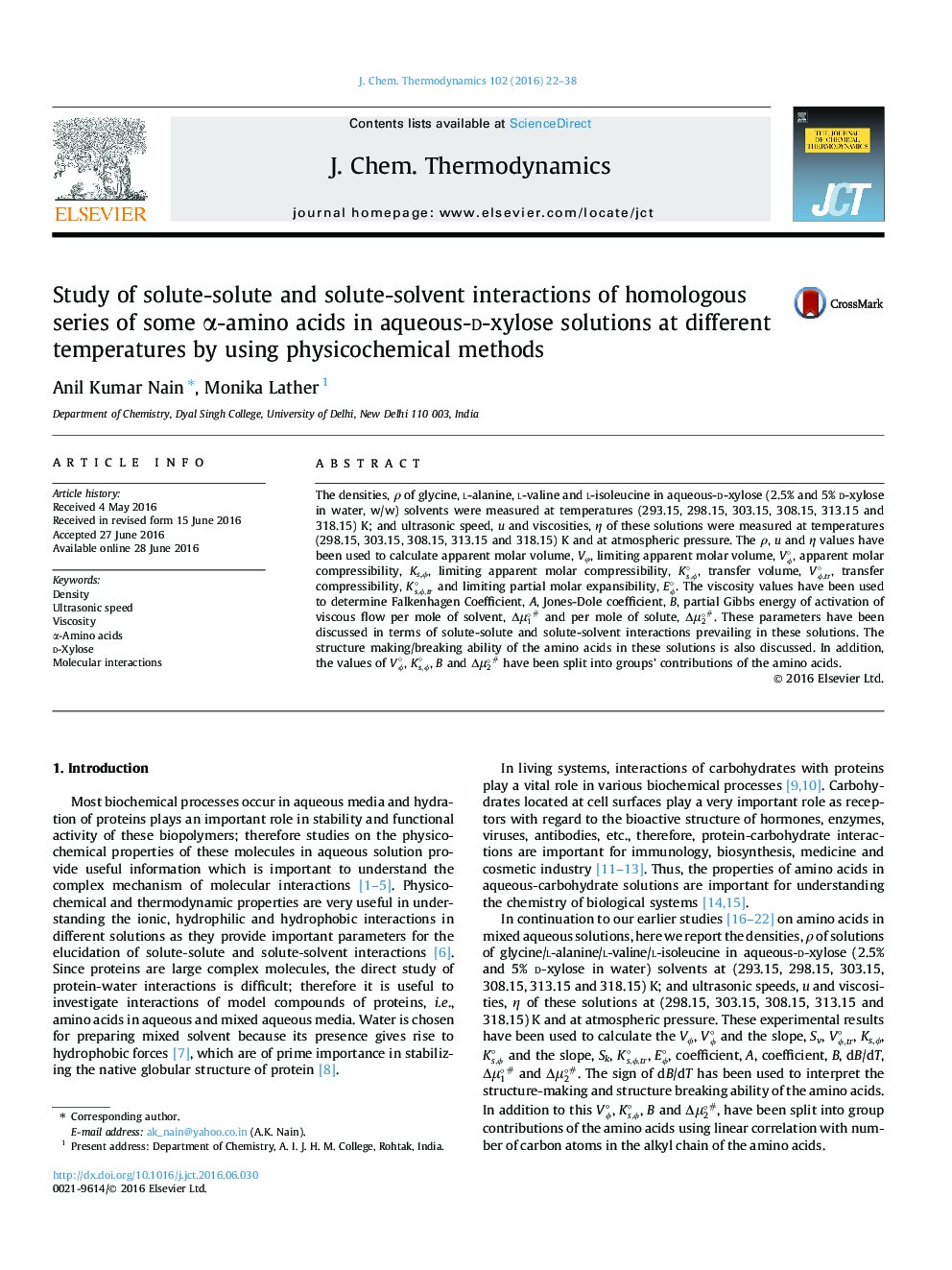| Article ID | Journal | Published Year | Pages | File Type |
|---|---|---|---|---|
| 214860 | The Journal of Chemical Thermodynamics | 2016 | 17 Pages |
•Study reports density, ultrasonic speed and viscosity data of α-amino acids in aqueous-d-xylose.•The study elucidates interactions of amino acids with d-xylose in aqueous media.•The study correlates physical properties of amino acids with their interactions in these solutions.
The densities, ρ of glycine, l-alanine, l-valine and l-isoleucine in aqueous-d-xylose (2.5% and 5% d-xylose in water, w/w) solvents were measured at temperatures (293.15, 298.15, 303.15, 308.15, 313.15 and 318.15) K; and ultrasonic speed, u and viscosities, η of these solutions were measured at temperatures (298.15, 303.15, 308.15, 313.15 and 318.15) K and at atmospheric pressure. The ρ, u and η values have been used to calculate apparent molar volume, Vφ , limiting apparent molar volume, Vϕ°Vϕ°, apparent molar compressibility, Ks,ϕ , limiting apparent molar compressibility, Ks,ϕ°Ks,ϕ°, transfer volume, Vϕ,tr°Vϕ,tr°, transfer compressibility, Ks,ϕ,tr°Ks,ϕ,tr° and limiting partial molar expansibility, Eϕ°Eϕ°. The viscosity values have been used to determine Falkenhagen Coefficient, A, Jones-Dole coefficient, B , partial Gibbs energy of activation of viscous flow per mole of solvent, Δμ1°#Δμ1°# and per mole of solute, Δμ2°#Δμ2°#. These parameters have been discussed in terms of solute-solute and solute-solvent interactions prevailing in these solutions. The structure making/breaking ability of the amino acids in these solutions is also discussed. In addition, the values of Vϕ°Vϕ°, Ks,ϕ°Ks,ϕ°, B and Δμ2°#Δμ2°# have been split into groups’ contributions of the amino acids.
Graphical abstractVariations of Ks,ϕ°Ks,ϕ° and B vs. nc for the amino acids in 2.5% d-xylose + water at different temperatures.Figure optionsDownload full-size imageDownload as PowerPoint slide
